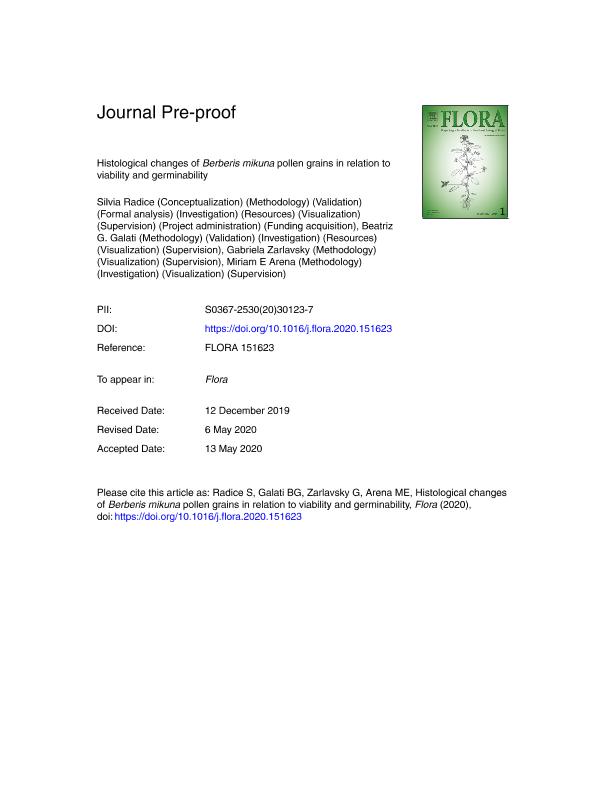Artículo
Histological changes of Berberis mikuna pollen grains in relation to viability and germinability
Fecha de publicación:
07/2020
Editorial:
Elsevier Gmbh
Revista:
Flora
ISSN:
0367-2530
Idioma:
Inglés
Tipo de recurso:
Artículo publicado
Clasificación temática:
Resumen
Berberis mikuna is a spontaneous shrub grown in the Tucuman-Bolivian subtropical jungle area and its fruits were highly prized as food by diaguitas and calchaquies who were local populations. Fruits are rich in phenolic compounds which would be responsible for the beneficial properties for health. Pollen preservation in gene banks should be implemented as standard procedures since pollen is a useful source of diverse alleles within a gene pool. Therefore, the aim of this work was to study the histological and ultrastructural changes of pollen grains after 45 days of conservation at different temperatures. Berberis mikuna pollen grain germination and viability decreased significantly after 45 days of its collection. Germination and viability decreased with increasing storage temperature, although the viability in T45 Ref and T45 Fr was similar. Ultrastructure studies revealed differences in the fibrillar structure of the intine, as well as the decrease in starch reserve in pollen grains stored at 5 °C andat room temperature.
Palabras clave:
SMALL FRUIT
,
SPONTANEOUS SHRUB
,
ULTRASTRUCTURE
Archivos asociados
Licencia
Identificadores
Colecciones
Articulos(SEDE CENTRAL)
Articulos de SEDE CENTRAL
Articulos de SEDE CENTRAL
Citación
Radice, Silvia; Galati, Beatriz Gloria; Zarlavsky, Gabriela Elena; Arena, Miriam Elisabet; Histological changes of Berberis mikuna pollen grains in relation to viability and germinability; Elsevier Gmbh; Flora; 268; 7-2020; 1-16
Compartir
Altmétricas




